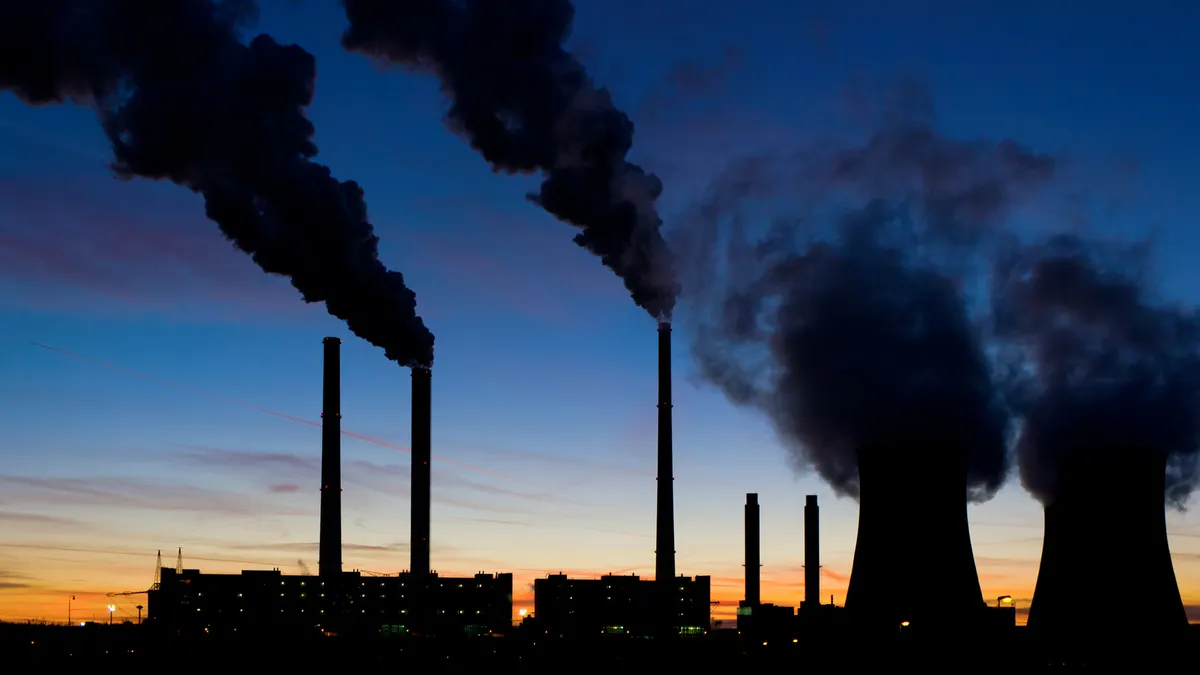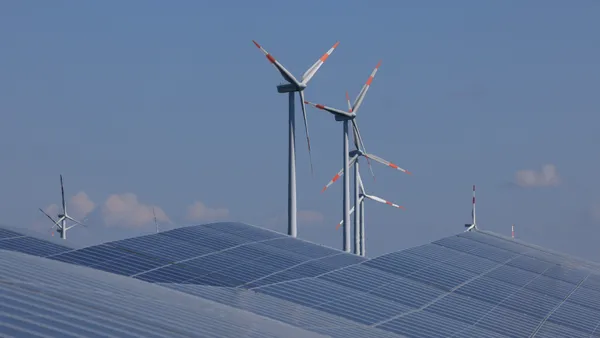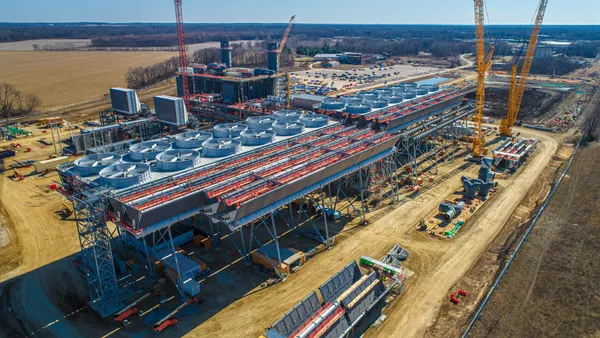Dive Brief:
- Generation of zero-carbon resources surpassed coal and gas individually in the U.S for the first time in 2017, according to a new Ceres report tracking air pollution from the 100 largest electric power providers in the country. But natural gas and coal combined still made up over half the country's electricity generation that year.
- Carbon-free resources made up 35.4% of electricity generation, beating out coal's 29.8% and natural gas' 32.1%, driven largely by the uptick in renewable energy generation, which made up 22.6% of non-emitting electricity. Nuclear and hydropower made up the rest, at 56.3% and 21.1%, respectively.
- Despite the broader progress on renewable energy generation, carbon emissions from the power sector saw a 1% uptick from 2017 to 2018, likely due to natural gas "taking up the slack" as more coal-fired power goes offline, Ceres' Senior Director of Electric Power Dan Bakal told Utility Dive.
Dive Insight:
The surge in renewable energy generation, coupled with the coal market's decline, dominate conversation in the energy sector, but the Ceres report is the latest evidence that carbon reductions aren't happening as quickly as scientists believe is necessary to prevent the worst impacts of global warming.
The report covers the top power producers in the country, which make up over 80% of the country's generation and total carbon emissions, according to Ceres. Power sector emissions overall rose 1.9% in 2018, as higher demand for electricity was met by growing natural gas generation.
"[N]atural gas has much lower emissions from a combustion standpoint than coal, it all depends on the relative amounts," said Bakal. "But clearly there is concern about the impact of natural gas generation on overall CO2 emissions."
Ceres calculated the amount of carbon emissions a power company produced in two ways — tons of carbon produced and pounds of carbon per MWh. The second scenario is intended to reflect the efficiency of a generator's system, or how effective their pollution controls are relative to the amount of carbon-emitting power they produce.
Duke, Southern Company, Dynergy, AEP and Berkshire Hathaway Energy produced the highest tons of carbon emissions in 2017. Meanwhile, Basin Electric Power Cooperative, Omaha Public Power District, Tri-State, Great River Energy and Buckeye Power produced the most pounds of carbon per MWh.
Exelon produced the most MWh of low carbon energy by around 75 MWh, largely due to the company's 19.6 GW of nuclear capacity. It was followed by Nextera and Duke, which each produced a little less than 100 million MWh of carbon-free generation.
Other emissions accounted for in the report include sulfur dioxide (SO2), nitrogen oxide (NOx) and mercury — all power plant pollutants. Natural gas produces "negligible" amounts of SO2 and mercury, according to the Union of Concerned Scientists, and coal produces all four pollutants.
SO2 causes acid rain, NOx contributes to smog and mercury is a potent neurotoxin.
Top power producers saw a year over year decrease in SO2 and NOx despite the carbon uptick: SO2 decreased 5.5% and NOx decreased 3.7% from 2017 to 2018.
And mercury emissions have significantly dropped since the Mercury and Air Toxics Standards (MATS) went into effect in 2015 — decreasing an average of 69% across 84% of coal plants from 2014 to 2017.
The decreases in NOx, SO2 and mercury emissions are largely the result of federal policies that have limited those emissions over the years, said Bakal.
Federal regulations on other pollutants "have led to substantial declines ... [But] with CO2, it's been different," Bakal said.
While many states and power producers are increasingly ambitious in their climate goals, the Trump Administration continues to roll back and replace Obama-era energy and environmental regulations, such as the Clean Power Plan.
Bakal said country-wide change on carbon emissions needs to happen by midcentury in order to prevent the worst impacts of climate change, consistent with the United Nations Intergovernmental Panel on Climate Change October report. That report found humans will have to reduce global carbon emissions 45% from 2010 levels by 2030 in order to reach net zero emissions by 2050 and prevent average global temperatures from rising an average of more than 1.5 degrees Celsius since the Industrial Revolution.
"The power sector needs to really completely decarbonize by mid century, and even before that, for a below two degree" change, he said. "So what it suggests is that we are seeing the industry head generally in the right direction, but there is certainly not full alignment with a two degree, or well below two degrees, scenario."















